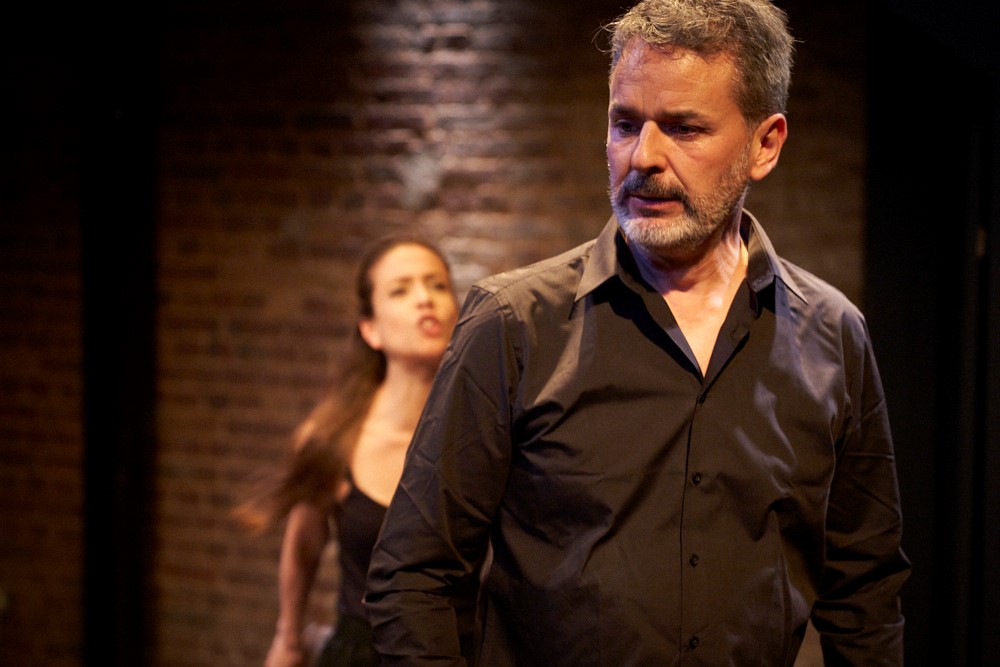Luigi Pirandello’s (1897-1936) play, ‘Six Characters in Search of an Author’ was so startling in its originality that it incited a riot when it was first staged in Rome on May 10th 1921. Albert Einstein was, apparently, an instant fan. When he met Pirandello backstage, he announced: “We are soul- mates!”
You would think that after all this time we would not find it so, but this new, award-winning adaptation of the play “THE PLAY TO BE PLAYED”, continues to disturb and entertain as much as it did on that fateful first night. It did not take the audiences in the 1920s long to be drawn to its magic. I am sure the same will happen here, at the Cervantes Theatre, where this new adaptation is being presented in Spanish and in an English translation, by Simon Breden, both versions directed by Jorge del Juan.
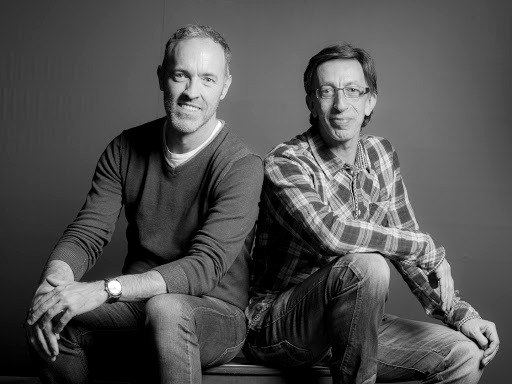
Miguel del Arco & Aitor Tejada
With a good dose of drama and humour interlinked, Miguel del Arco and Airto Tejada, who co-founded Kamikaze Productions in 2002, have simplified some aspects of the original play, reducing the numbers in the cast and placing it in a more contemporary setting, namely a Spain ravished by its devastating Economic Crisis. The crisis, known as the Great Recession, or the Great Spanish Depression, was triggered by the global financial crisis of 2007-2008, leading to a vicious cycle of bankruptcies, unemployment, and whole swathes of the population being torn apart by debt, adding another dimension to this new play.
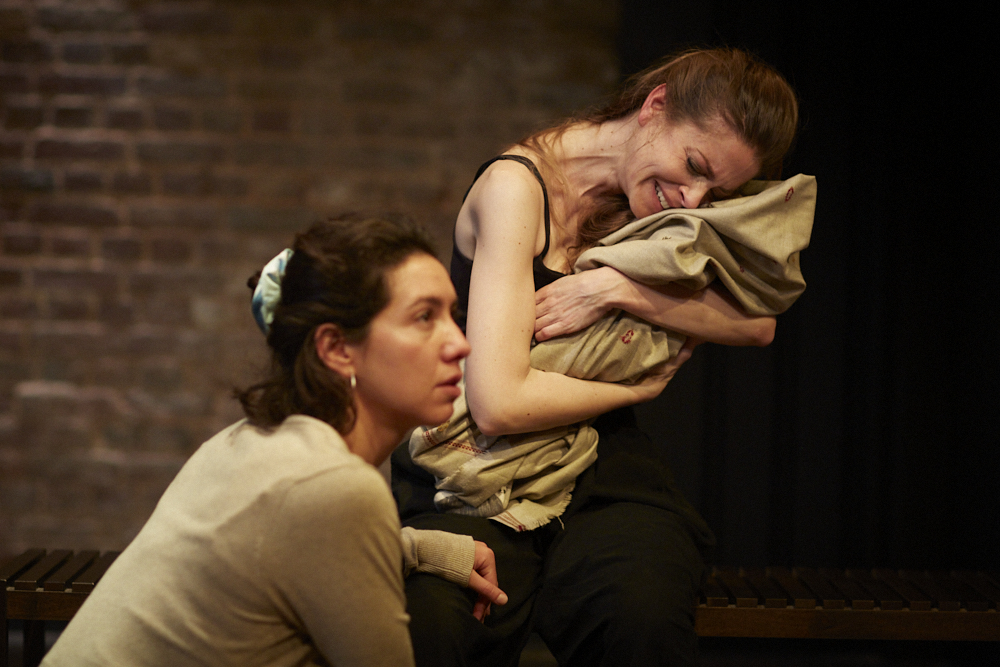
Fuensanta Vera as The Actress & Candela Gómez as The Wife
Pirandello's profoundly original and dramatic premise, now in the new version, THE PLAY TO BE PLAYED” is one in which characters arrive on stage searching for an author. In this case, all four (rather than Pirandello's six) complain they have been abandoned and are in despair at having been unable to complete their stories. Their entrance interrupts the performance of an Actor and Actress (the charismatic Jesús Gallo and Fuensanta Vera). Although they are courting, they have descended into a furious argument because the actress is none too pleased at the unflattering portrait that the Actor has painted of her. She is even less pleased when their bickering is disturbed by the arrival of the four characters.

Gian Carlo Ferrini as The Younger Brother & Jesús Gallo as The Actor
The Actress is upset and cynical about their premise, being anxious to resume her own performance and insistent on trying to persuade them to leave, feeling that their stories have already been played out once too often on TV. The Actor, on the other hand, is intrigued and decides he will direct the characters so they can act out their story. He is fascinated by the idea of the illusion, what appears to be, alluding to Calderon de la Barca who wrote: “La vida es sueño y los sueños, sueños son: realidad y sueño” (All Life is a dream and dreams are only dreams: reality and dreams). The Actor also refers to what defines Beauty in art (as expressed by Thomas Aquinas): “Consonantia, claritas et integritas!” (Harmony, Luminosity and Integrity). The four characters plead with the Actors: “We are fascinating characters but we have been abandoned, the author may die, but we will live on forever… we want to live!”
Tejada and Del Arco burst on the scene with this inventive adaptation of Pirandello’s play, THE PLAY TO BE PLAYED and it was first staged during that time of hardship, immediately giving it another dimension, reflecting the pain of the time. As Del Arco says:
“On paper, the possibilities are endless. What you imagined so clearly, usually acquires a coarse and imposed appearance when performed on the stage. But that is what I enjoy the most. The incarnated battle (because it must become embodied) to make the words that you imagined, become words in action. I write so that I can experience these moments. I treasure the loneliness in which I feel like I am in good company and the noise of company that sometimes produces loneliness... Opposing forces to strike a certain balance.”
This play challenges the audience in many ways. The stage is stark, with a minimal set, as the traditional boundaries of the stage are torn away and the performers and the audience merge. It can be disturbing and challenging. It is a superb production for a small intimate theatre like the Cervantes where the audience can feel the breath of the performers and the physical proximity. Where does the stage begin and where does it end? The Younger Brother (Gian Carlo Ferrini) suffers for he feels he is an unresolved character, he wants out, but cannot leave.
“Si no es loco. ¿Qué es? (If it’s not mad, then what is?) a character demands to know.
As the boundaries vanish, the audience feels it has become a part of the event provoking much thought. Here we have 4 characters who are desperate to be. It is a real case of to be or not to be. For if they cannot find an author, they cannot be released. They are trapped in the drama of their tragedies and inner lives, unable to change. All the while, they insist they are more real than the actors who will play them on stage. The Actor and the Actress have the freedom to be what they wish for they are not prisoners of their roles like the characters. The Actor can play the character, but the character can only be himself. A deeper philosophical element here also questions the validity of truth, can we really know or understand it, can we live it, can it be expressed? Are words there to silence remorse?”
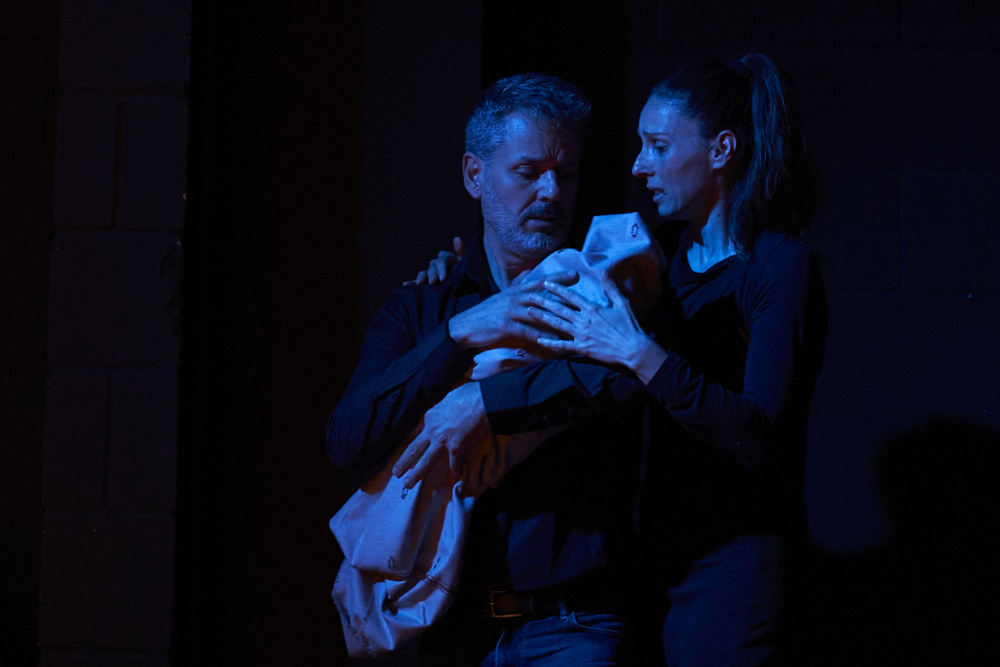
Jorge Lucas as The Older Brother & María Esteves-Serrano as The Wife
The Wife played by Candela Gómez, is profoundly obsessed with the Elder Brother (played Jorge Lucas) who is also her brother-in-law. She cannot get free of it and her obsession has no end because she is that character and must live and relive it, ad infinitum. In this way, the 4 characters desperately search to find an author so they can move on and grow. The Mother, who is lost in grief at having lost her own child, tries to compensate by smothering the Wife’s baby with a love so possessive, it could have been one of the reasons the Elder Brother found solace in the Wife’s arms. The Younger Brother wanders in a semi-limbo unable to be, as he is not complete, not finished, so he agonizes his futile existence in pain.
Despite the intensity of the work, it flows with ease and there is much humour as well. The production engages the audience in a participatory experience like few others. Not to be missed.
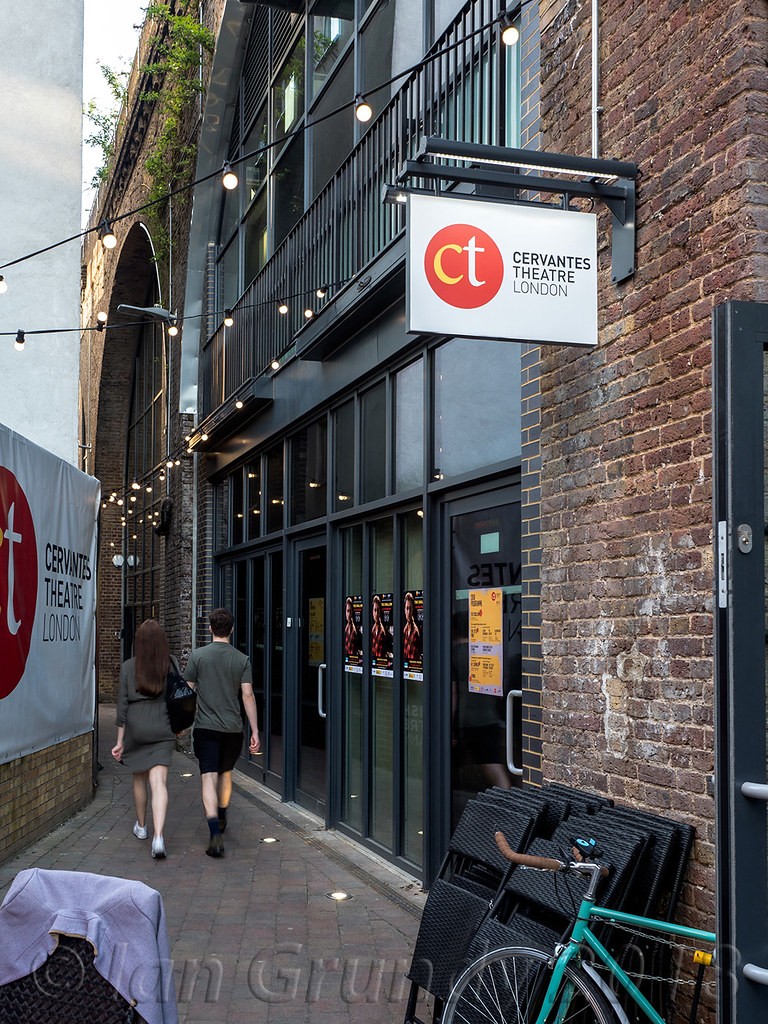
Candela Gómez , being perfectly bi-lingual, plays 'the wife' in both versions in English and in Spanish. It is particularly interesting to observe how the essence of each language affects the dynamics of the play. Certain elements take on a varying importance from one version to the another, emphasizing different angles of the story. Video in Spanish, no subtitles.
Candela Gómez (who plays the Wife) at the Cervantes Theatre.
Teatro Cervantes Old Union Yard
THE PLAY TO BE PLAYED
Writers: Miguel del Arco and Aitor Tejada/ Director: Jorge de Juan/ Artistic Director: Paula Paz
Cast Spanish Version: Actor: Jesús Gallo/ Actress: Fuentesanta Vera/ Older Brother :Jorge Lucas/ Madre: María Esteves-Serrano/ Younger Brother: Gian Carlo Ferrinni/ Wife: Candela Gómez
Cervantes Theatre: Old Union Yard/ 229 Union Street/ Southwark SE1 0LR
Spanish 7th – 18th June / English 19thJune- 9th July.


